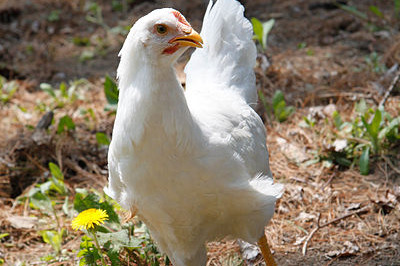Scientists look at genetics behind chicken weight gain

Scientists in the United States have achieved a better understanding of the genetic architecture behind chicken weight.
Taking advantage of a special experimentally-bred population – the Virginia chicken lines – the researchers believe the study will help them develop better predictive models for bird growth in the future.
Led by Professor Orjan Carlborg, from Uppsala University, Sweden, the research team used two divergently bred lines of White Plymouth Rock chickens, which have been selected since 1957 for their high and low body weight.
In their study, they used an advanced intercross line founded by mating the high and low weight lines after 40 generations of selection.
The average 56-day body weight in the high-weight line was then 1,412g compared to that of the low weight counterpart that only weighed 170g – 12% of the weight of the high weight line.
Using the 15th generation of the intercross line between the high and low weight lines, the scientists identified 20 different genetic loci that when examined explained more than 60% of the additive genetic variance for the selected trait.
Prof Carlborg said: “Our work with this long-term selection experiment has revealed that different variants at many genetic loci contribute to the large divergence between the lines selected for high and low weight.
“This is an interesting experimental illustration of how even small and phenotypically homogenous populations can harbour many genetic variants that do not diversify the population normally. But still they can allow rapid and extreme adaptations when the population is subjected to intense selection.”
The researchers focused on seven of the genetic hotspots and found that only two could be more finely mapped to a single, well-defined loci. The complexity of the genetic mechanism within the individual loci were such that scientists will need to get better insights in this area through more research.
• The paper was published this week in the Journal of Molecular Biology and Evolution.













